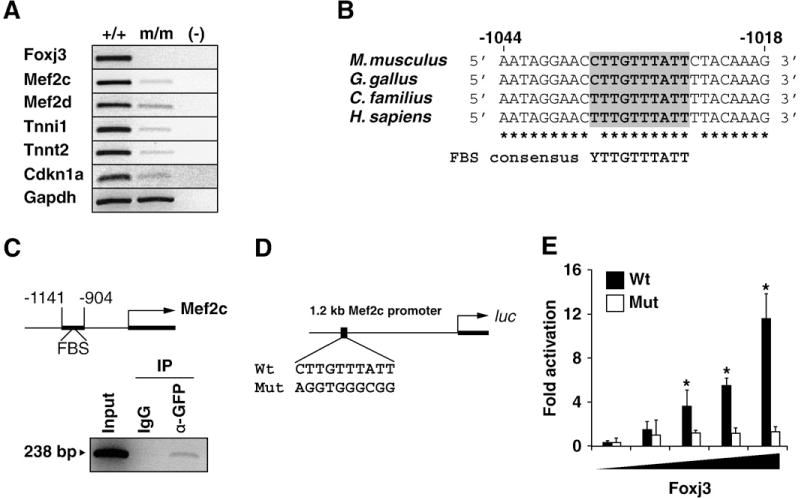Fig. 6.

Mef2c is a direct downstream target of Foxj3 in skeletal muscle. (A) Semi-quantitative RT-PCR analysis of WT and Foxj3m/m MPCs reveals decreased expression of Mef2c and Mef2c-dependent target genes in the absence of Foxj3. Decreased expression of Cdkn1a or p21KIP corresponds to the increased proliferative capacity of the mutant MPCs as demonstrated in Fig. 3A. The housekeeping gene Gapdh is used as the loading control. (B) Homology alignment of the 5′ upstream Mef2c promoter reveals an evolutionarily conserved forkhead binding site or FBS. (C) Chromatin immunoprecipitation (ChIP) of Foxj3 using primers for the FBS in the Mef2c skeletal muscle enhancer indicate that Foxj3 directly binds to the FBS. IgG and 10% total chromatin (Input) are shown as controls. (D) Schematic outlining the Mef2c upstream fragment that harbors the FBS (and corresponding mutant construct) fused to the luciferase (luc) reporter constructs that were used in the transcriptional assays in panel E. (E) Foxj3 transcriptionally activates the Mef2c-luc skeletal muscle enhancer reporter in a dose dependent fashion in C2C12 myoblasts (n=3; *p < 0.005). Mutagenesis of the FBS ablates the ability of Foxj3 to transcriptionally activate the Mef2c-luc reporter.
